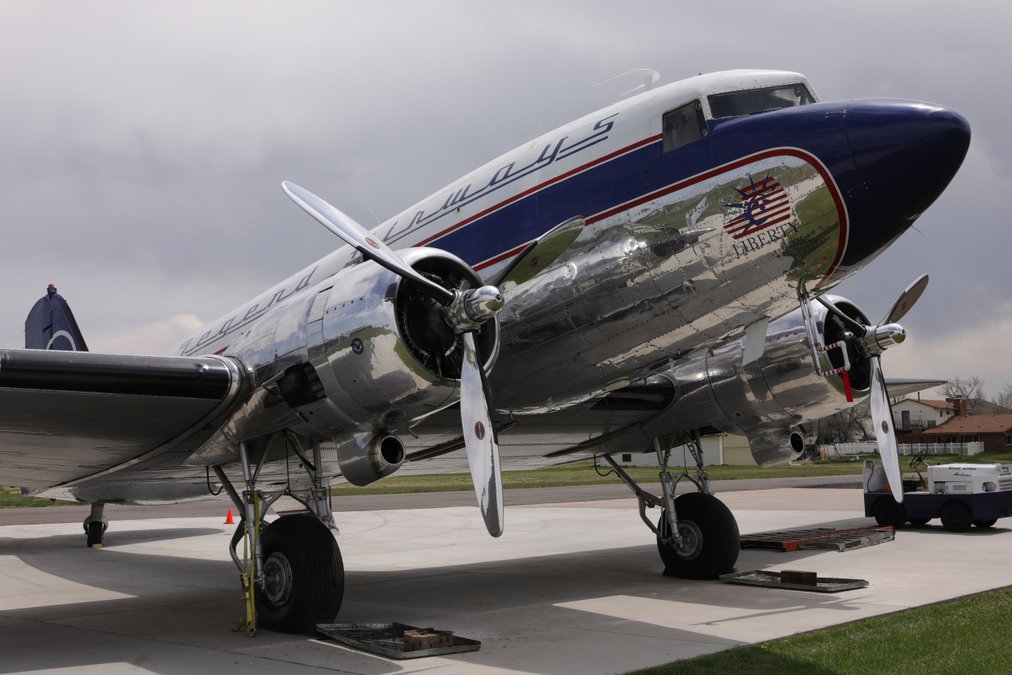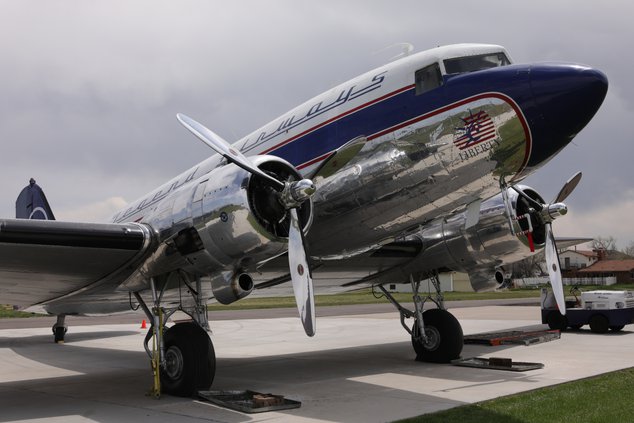When the Great Bend Airfest returns in September, visitors will have the opportunity to see a restored military airplane that played a vital role in the nation’s war history.
One of the aircraft making a visit to Great Bend is a World War II-era DC-3, also known as a C-47 by the U.S. military model identifier. It is owned by Brighton, Colo.-based commercial airline pilot Brandon Jewett of JB Air Services.
The plane, originally built in a factory in California in February 1943, once graced the skies above the beaches of Normandy, France during the D-Day Invasion in June 1944. It will be on static display for Airfest visitors from Sept. 17-19.
Before flying over Normandy, the 65-foot long aircraft with a 95-foot wingspan first saw action in the war in North Africa, before being re-stationed in England prior to the invasion. Following the war, the plane remained in Europe for Operation Market Guard to support post-war cleanup efforts.
Following the war, the plane was sold by the U.S. military as surplus to a private buyer in 1946. It remained in private hands until Jewett purchased the plane.
Jewett purchased the plane in 2018 from a man in Missouri with the intention of restoring it in order to fly the plane’s old crew members back to Normandy for the 75th anniversary of the D-Day Invasion in June 2019. However, as he did more research, he discovered the plane’s original military crew had all passed away, so he took a crew of four, and flew in a squadron of other surviving C-47s over Normandy in commemoration of the event.
Though the aircraft was still airworthy when he purchased it, Jewett said the plane was in poor condition. So he set out to carefully restore the plane.
Jewett said with very few World War II veterans still surviving, preserving equipment such as his C-47 that saw action in the war is crucial to holding onto the stories of that pivotal point of history so it can be taught to future generations. He sees preservation of the surviving artifacts and equipment from the war as vital to telling the stories of the countless men and women who put their lives on the line for freedom during World War II.
“We don’t have the veterans, but we do have the planes they flew,” he said. “I consider the plan a veteran of D-Day, too.”
Jewett, who has spent countless hours researching the aircraft’s history, said its role in the invasion was a vital one. Jewett has the crew manifest from the day of the invasion, as well as which airports the plane originally took off from.
On D-Day, Jewett’s “Liberty” DC-3 towed gliders and carried airborne paratroopers to the battlefield.
By his estimation, Jewett and others spend in the neighborhood of $100,000 and countless hours per year to keep the vintage aircraft in airworthy condition. However, as a labor of love, he considers the investment of both time and resources part of his mission to tell the stories of D-Day.
“If it makes one person think twice about what somebody did (for them), then it’s well worth it to me,” Jewett said. “The best way to share that is to (put it in front of them (at an airshow).”
Jewett and two other volunteers spend time performing regularly scheduled mechanical maintenance on the large aircraft to make sure it remains airworthy. There is a great deal of cosmetic maintenance and cleaning that must be done to keep it presentable, as well. He describes it as a constant process which consumes nearly all of his free time.
He sees his role with the aircraft as more of a custodian of history than that of ownership.
“To me, it’s imperative the airplanes are maintained in a flyable condition, so they’re not rotting and end up destroyed,” he said.








